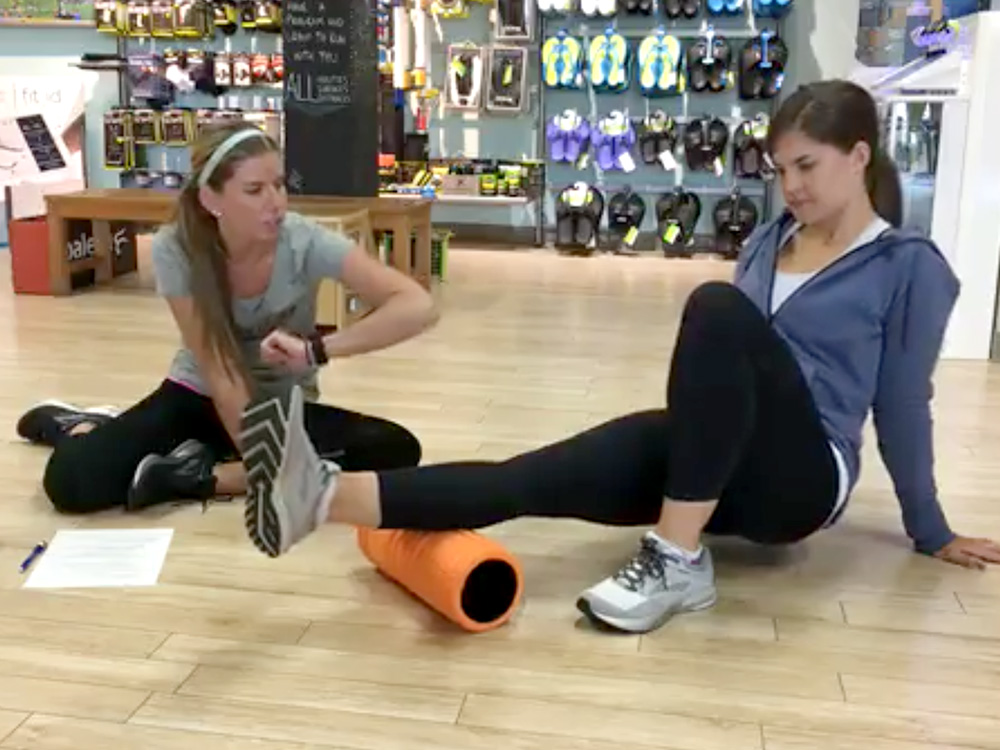
We did a Facebook Live with the people over at Fleet Feet on the best foam rolling moves for people that run. Have you ever tried foam rolling?
Check out the whole video here!
The Benefits of Foam Rolling
- Eliminates adhesions in your muscles and connective tissues – this helps keep your fascia moving freely, enhancing mobility.
- Adhesions create points of weakness in the tissues, which leads to injury or pain
- Increases blood flow to the area resulting in faster recovery and reduced soreness
- Helps maintain normal muscle function – means your muscles are elastic, healthy, and ready to perform at a moment’s notice
Types of Tools Used in the Video
- Triggerpoint GRID roller
- Triggerpoint MB5 Ball
Foam rolling can be performed anytime – before as part of your warm-up routine or after as part of your cool down to aid in recovery.
General Foam Rolling Tips
- Your movements should be slow and controlled (don’t foam roll too fast). Break big muscle groups into smaller sections.
- Continue to breathe throughout movements – don’t hold your breath
- Never roll over a joint or bone – focus on the fleshy parts of your body
- Avoid foam rolling your lower back – it tends to be a sensitive area with several nerves. Typically foam rolling other areas surrounding your lower back (such as glutes and pirfirmoris) will help relieve pain in that area.
- Make sure you maintain good posture while rolling
- Be consistent for long-term benefits
- The point of pain is not necessarily the origin of your issue – make sure you are working all areas surrounding trouble spots
3 Muscle Groups to Target While Foam Rolling
(these tend to be common problem areas for runners in particular)
Gastrocnemius/Calves:
- Chronically tight calves can contribute several ailments including plantar fasciitis, Achilles tendonitis, and shin splints.
- Place one leg on the foam roller, prop yourself up with the opposite hand, and roll slowly back and forth
- To add additional pressure, place the opposite leg on top of the one resting on the foam roller
- Angle your toes in and out to work different areas of the calves
Quads – Rectus Femoris, Vastus Lateralis, Vastus Medialis
- Quads are important for hip and knee stabilization
- Due to their size, it’s best to break up each section of the quad into 3 parts
- Lay on your stomach, prop yourself up on your elbows while bending the opposite leg slightly for support
- Start just above the knee roll slowly (approx. 2-inch section), and do 2-3 knee bends while maintaining pressure on the roller
- Follow the same movements on the middle area of the muscle, and finally near the top
- Pivot at a 45-degree angle and 90-degree angle to work all areas of the quad
Piriformis (best to use MB5 Ball)
- Small deep muscle in the upper portion of the glutes – important for stabilizing the pelvis
- When tight, the piriformis can impinge the sciatic nerve causing pain
- Sit with hands behind your body for support and angle yourself so that the upper part of your glute rests on the ball
- Sit with your hands behind your body for support; keep the opposite leg slightly bent to help manage the pressure
- Movements include: rolling back and forth, circles, rotating the hip externally in a clamshell motion, and extending the leg straight
Feel free to stop by Fleet Feet Sports Madison or Sun Prairie with any other questions related to foam rolling!

